Why is Art Made by Minorities Incredibly Important?
Before diving into this article, I want to take a moment to speak to my queer community. In these turbulent times, when some governments claim to champion human rights and freedom of speech and instead oppress people and diminish the value of live, we must stand together. Now more than ever, we need to protect and uplift one another, fostering solidarity in the face of adversity.
lets start Why is art made by minorities so important, Art made by minorities is incredibly important for several reasons. Firstly, it provides a platform for underrepresented voices to be heard. Historically, white, male artists have dominated the art world, leaving little room for diversity. By showcasing art made by minorities, we can better understand their experiences and perspectives.
Challenging the Status Quo
Secondly, art made by minorities can challenge the status quo and bring attention to social issues. Many minority artists use their work to address topics such as racism, sexism, and discrimination. This can spark important conversations and lead to positive change.
Inspiring Future Generations
Finally, art made by minorities can serve as a source of inspiration for future generations. Seeing someone who looks like you succeed in a field that has historically excluded people like you can be empowering. It can encourage young people to pursue their passions and break down barriers.
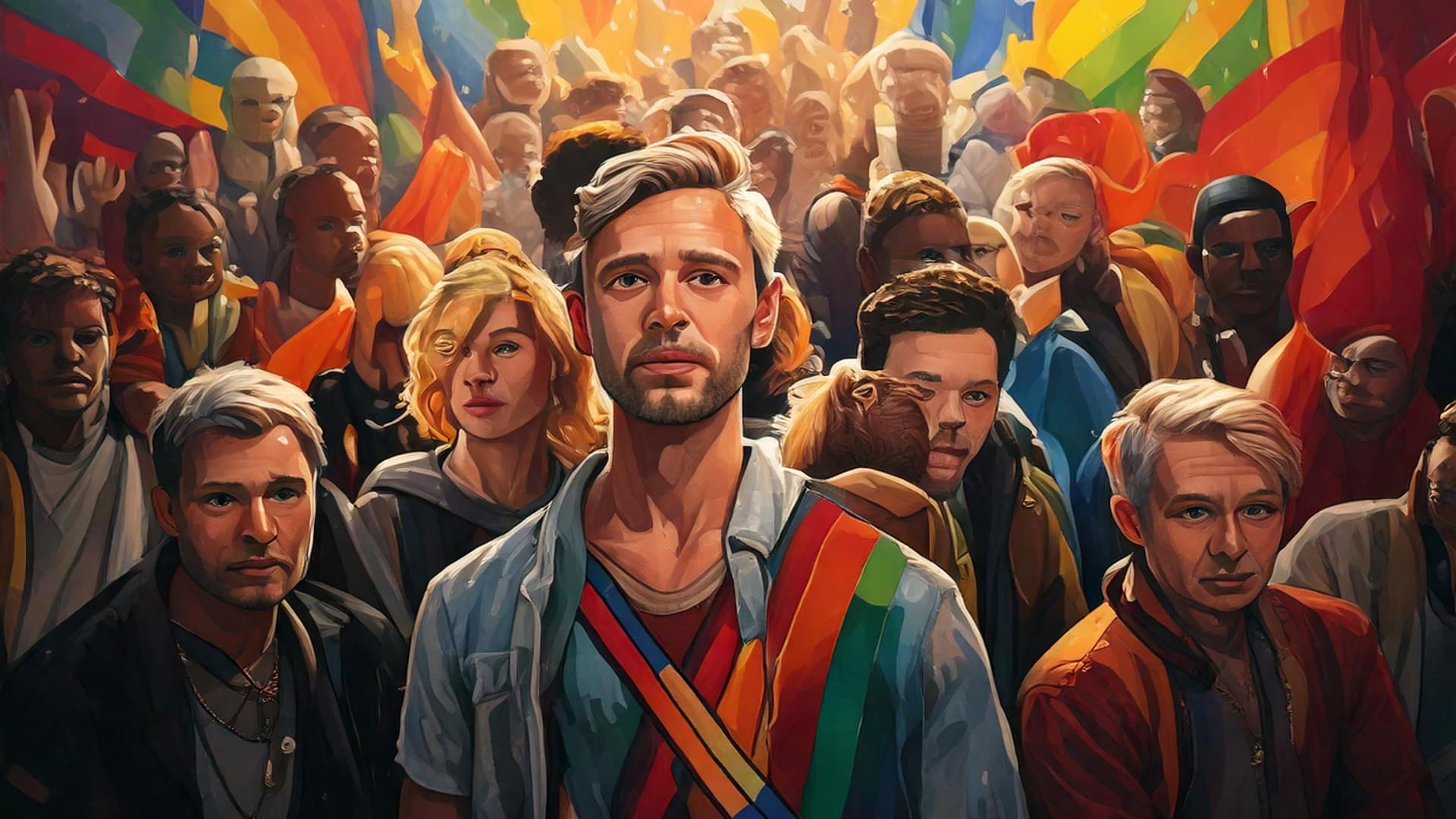
AI-generated image of diverse individuals looking towards the camera, holding or surrounded by LGBT flags, symbolizing inclusivity and diversity in art
Why are LGBT Artists Needed?
LGBT artists are essential to the art world. They bring a unique perspective and voice to an industry that has often overlooked them. Their experiences and struggles are reflected in their work, creating a powerful and emotional connection with their audience. LGBT artists have been instrumental in pushing boundaries and challenging societal norms, paving the way for future generations of artists.
Representation Matters
Representation matters, and LGBT artists provide representation for a community that has historically been marginalized and underrepresented in the art world. Their work reflects their personal experiences and sheds light on the struggles and triumphs of the LGBT community as a whole.
Bringing Awareness to Issues
By showcasing their work, LGBT artists bring awareness and understanding to the issues faced by the community. This awareness is crucial in fostering empathy and solidarity among audiences, creating a more informed and compassionate society.
Challenging Stereotypes
Furthermore, the inclusion of LGBT artists in the art world helps to break down stereotypes and promote acceptance and diversity. Their work challenges traditional gender roles and societal norms, encouraging viewers to think critically about their own beliefs and biases.
Creating an Inclusive Art World
By supporting LGBT artists, we can create a more inclusive and accepting art world that celebrates diversity and promotes equality. This inclusivity not only enriches the art community but also helps cultivate a society that values and celebrates all forms of identity.
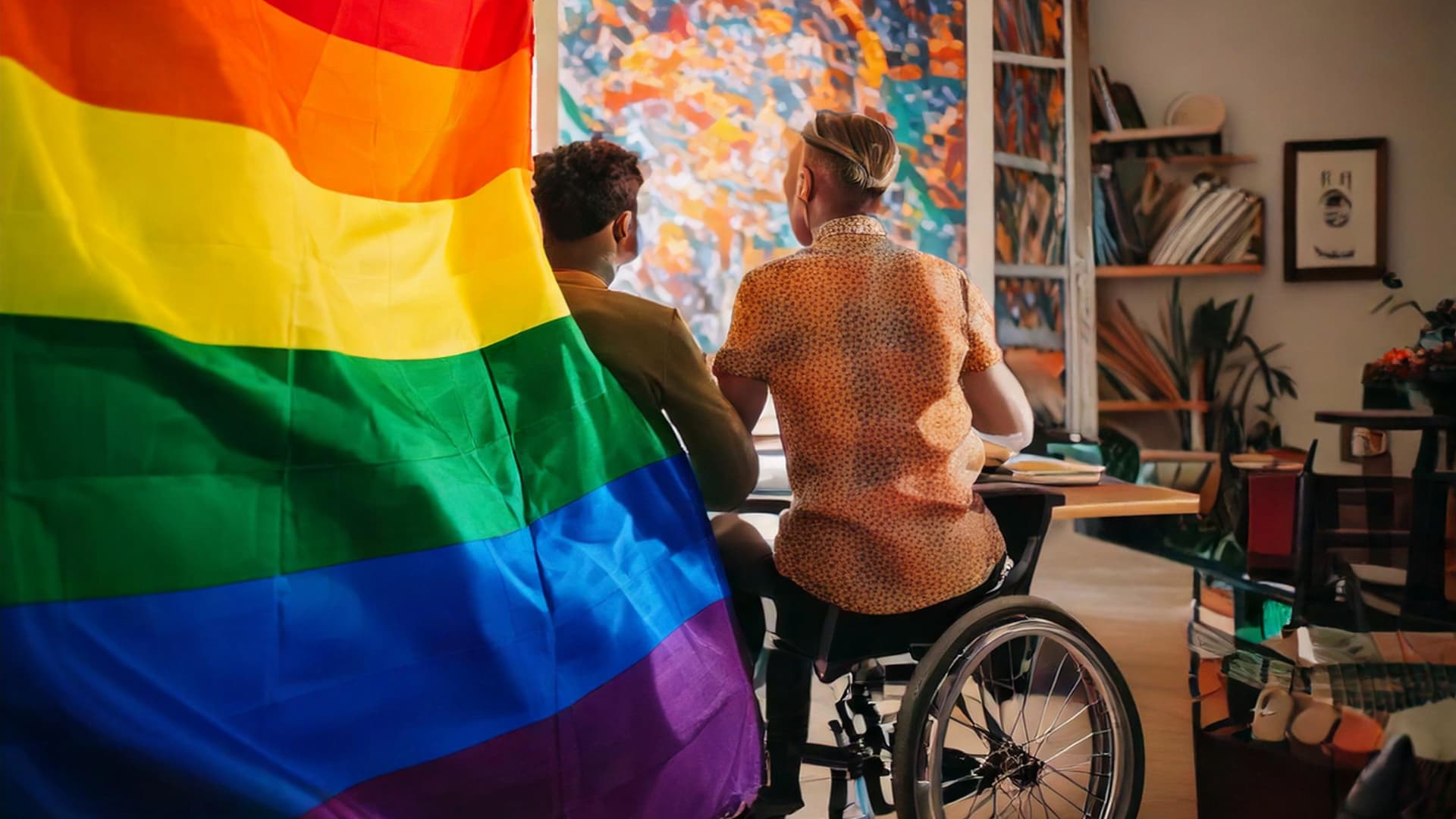
AI-generated image of a person in a wheelchair holding an LGBT flag, symbolizing inclusivity and empowerment for people with different abilities
#1. Greer Lankton
Known for her intricate and often grotesque dolls, Greer Lankton was a pioneer in the art of assemblage. Her work often explored themes of gender and sexuality, and she was a prominent figure in the New York City art scene in the 1980s.
Lankton’s dolls were meticulously crafted, blending beauty with unsettling details. Each piece told a story, reflecting her own experiences and struggles.
Her art was deeply personal, often addressing issues of identity, transformation, and the human condition. She used her work to challenge societal norms and expectations.
Lankton was a transgender woman, and her identity played a central role in her art. She created spaces for marginalized voices, making her a trailblazer in the LGBTQ+ community.
Her work has been exhibited in galleries and museums, gaining recognition for its raw emotion and unique style. Lankton’s legacy continues to inspire artists today.
Why her work matters: Greer Lankton’s art is a powerful exploration of identity and self-expression. It challenges viewers to confront their own perceptions of beauty and normality.
Through her dolls, she created a world where the unconventional was celebrated. Her work remains a testament to the power of art as a tool for personal and social transformation.
To learn more about her life and art, you can explore her exhibitions and the documentaries that celebrate her contributions to the art world.
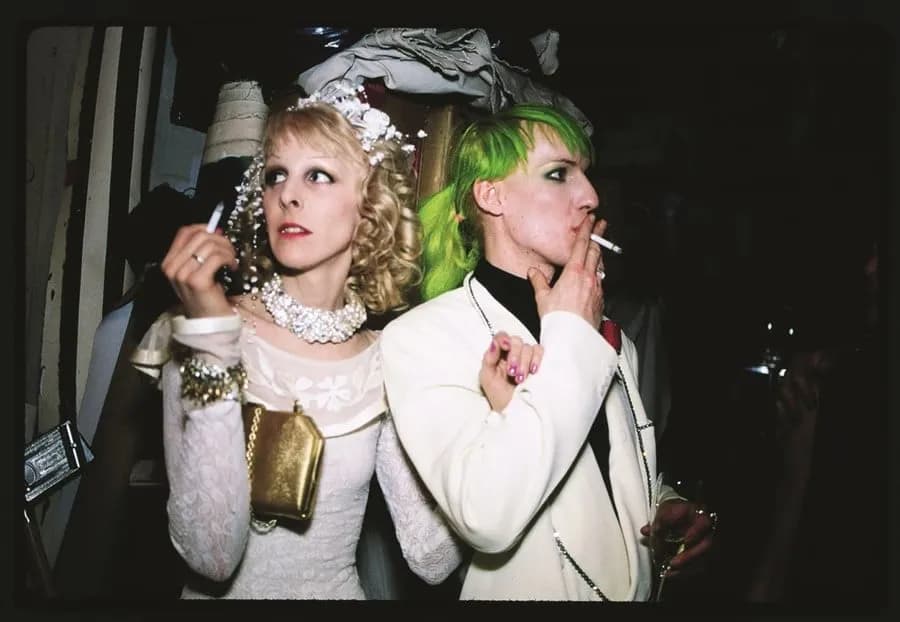
Greer Lankton, artist and dollmaker, posing alongside a companion in an intimate and creative setting
#2. Wu Tsang
Wu Tsang is a filmmaker and artist who explores themes of identity and queerness in her work. Her films have been screened at major festivals around the world, and she has been the subject of numerous solo exhibitions.
Tsang’s work often blends documentary and fiction, creating immersive experiences that challenge traditional storytelling. She uses film, performance, and installation to explore complex narratives.
Her art focuses on marginalized communities, particularly LGBTQ+ and immigrant experiences. Tsang gives voice to those often overlooked by mainstream media.
One of her most acclaimed works is the film 'Wildness,' which documents the vibrant nightlife of a queer bar in Los Angeles. The film is both a celebration and a critique of safe spaces.
Tsang’s installations often incorporate multimedia elements, creating environments that engage the audience on multiple levels. Her work is both visually striking and deeply thought-provoking.
Why her work matters: Wu Tsang’s art bridges the gap between activism and creativity. It highlights the struggles and resilience of marginalized communities.
Through her films and installations, she challenges viewers to rethink their assumptions about identity, belonging, and representation. Her work is a call for empathy and understanding.
Tsang has received numerous awards and grants, solidifying her place as a leading voice in contemporary art. Her influence extends beyond the art world, impacting social and cultural conversations.
To learn more about her work, you can explore her films, exhibitions, and the critical acclaim they have garnered worldwide.
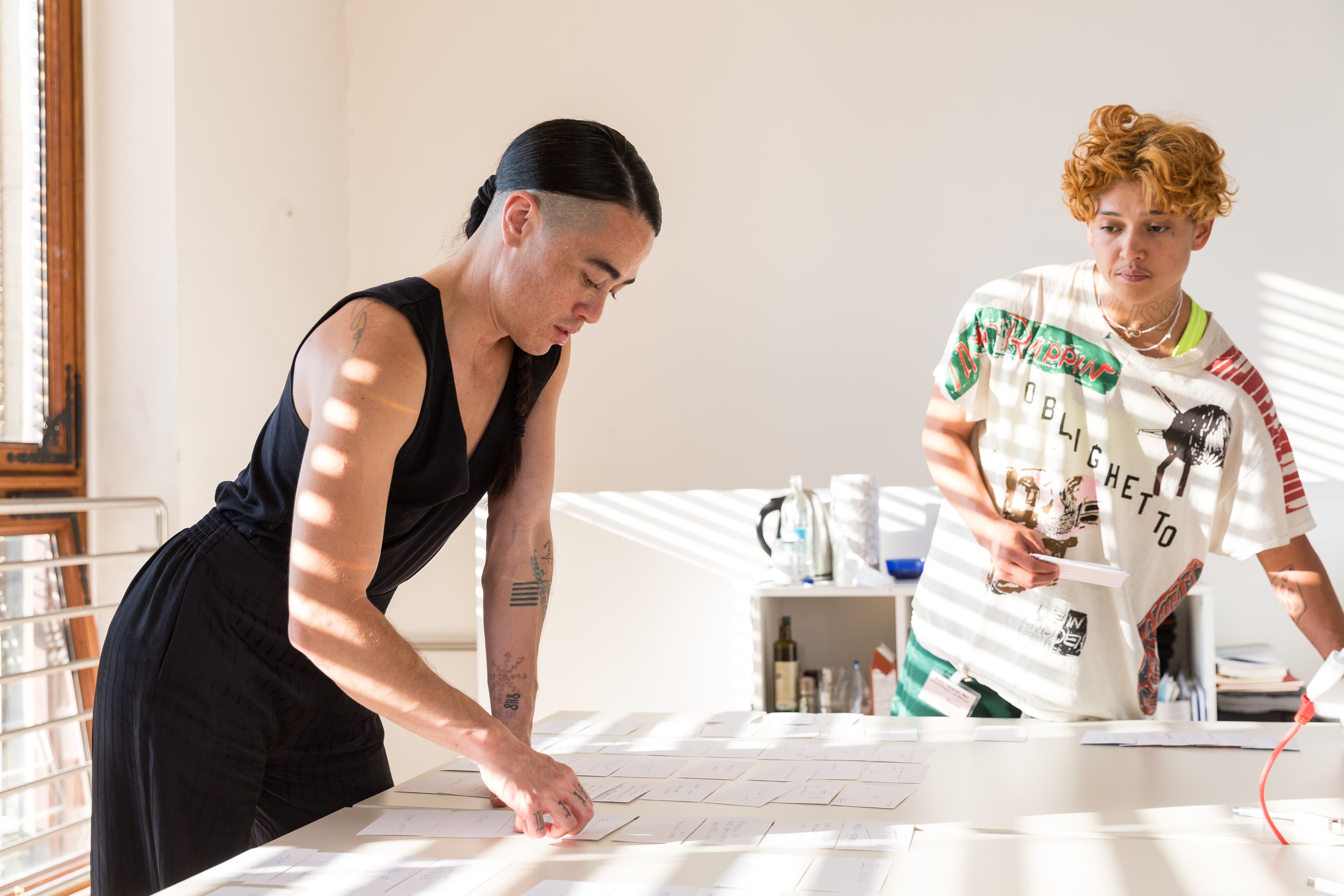
Wu Tsang, a transgender filmmaker and artist, photographed in a studio setting
#3. Juliana Huxtable
Juliana Huxtable is a writer, performance artist, and DJ whose work often explores the intersections of race, gender, and technology. She has been featured in major art exhibitions around the world, and her writing has been published in a variety of publications.
Huxtable’s art is multidisciplinary, blending poetry, performance, and visual elements. She uses her work to challenge societal norms and explore the complexities of identity.
Her performances are powerful and provocative, often addressing themes of queerness, Blackness, and the digital age. Huxtable creates spaces where marginalized voices can be heard and celebrated.
As a DJ, she brings her artistic vision to the dance floor, curating sets that are both energetic and thought-provoking. Her music reflects her commitment to inclusivity and self-expression.
Huxtable’s writing is equally impactful, with pieces that delve into the intersections of culture, politics, and technology. Her voice is sharp, insightful, and unapologetically bold.
Why her work matters: Juliana Huxtable’s art is a powerful exploration of identity in the modern world. It challenges viewers to confront their own biases and assumptions.
Through her performances, writing, and music, she creates a dialogue about the future of race, gender, and technology. Her work is both a reflection of and a response to contemporary society.
Huxtable has been recognized with numerous awards and residencies, cementing her status as a leading figure in contemporary art and culture. Her influence continues to grow across multiple disciplines.
To learn more about her work, you can explore her performances, writings, and the exhibitions that showcase her groundbreaking contributions to art and activism.
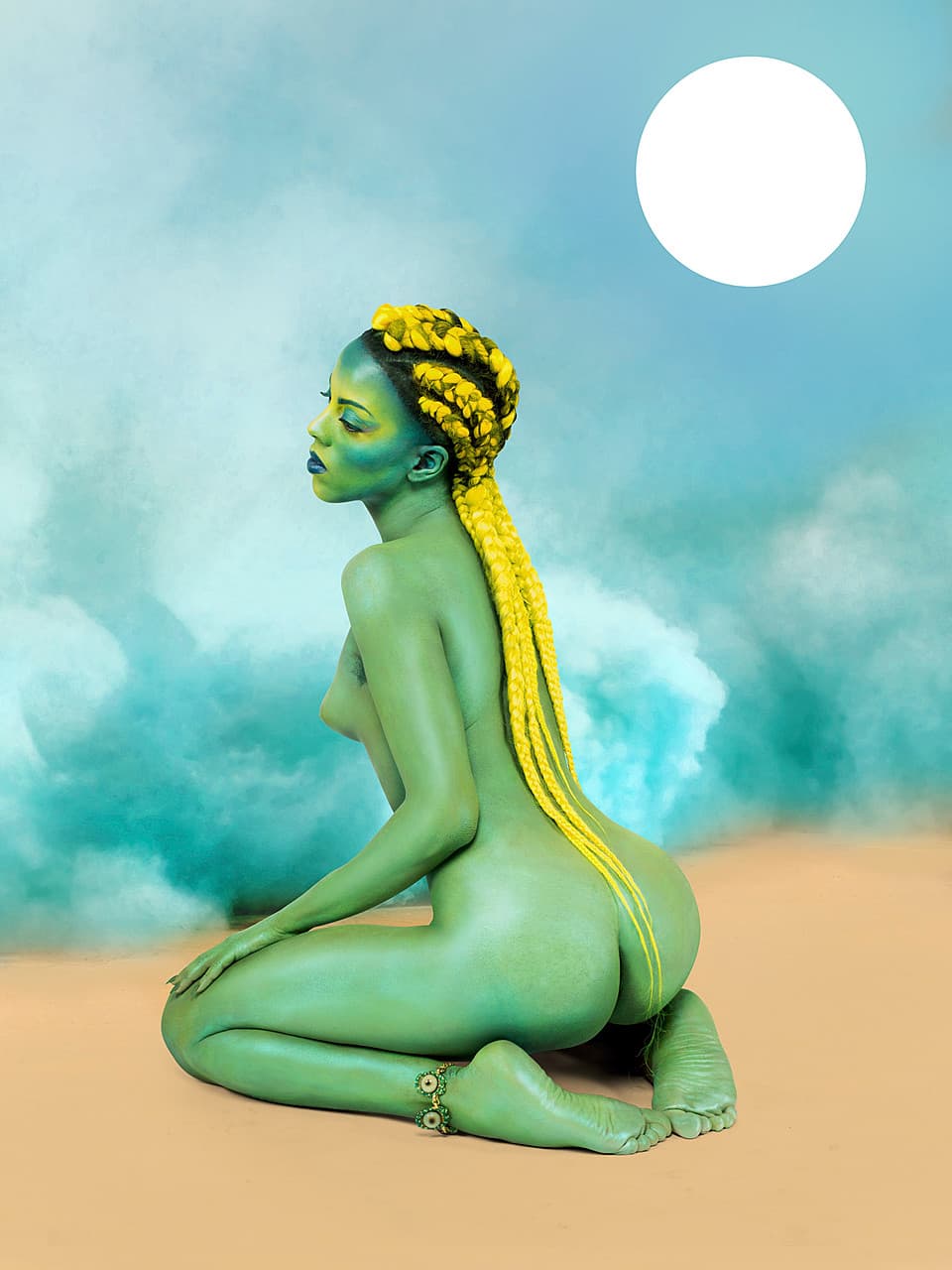
Juliana Huxtable, visual and performance artist, in a contemporary art installation
#4. Cassils
Cassils is a performance artist and bodybuilder whose work often explores themes of gender and violence. They have been featured in major exhibitions around the world, and their work has been the subject of numerous critical essays and reviews.
Cassils uses their body as a medium, transforming it through intense physical training and performance art. Their work challenges traditional notions of gender and power.
One of their most famous pieces, 'Becoming an Image,' involves Cassils striking a 2,000-pound clay monument in complete darkness. The performance is both visceral and symbolic, addressing themes of trauma and resilience.
Their art often incorporates elements of endurance, pushing the limits of the human body to make powerful statements about identity and social justice. Cassils’ work is raw, impactful, and deeply thought-provoking.
Cassils identifies as transgender and uses their art to explore the complexities of gender nonconformity. They create spaces for dialogue about the experiences of trans and nonbinary individuals.
Why their work matters: Cassils’ art is a bold exploration of the body as a site of resistance and transformation. It challenges viewers to rethink their assumptions about gender, strength, and vulnerability.
Through their performances, Cassils addresses systemic violence and oppression, particularly against marginalized communities. Their work is a call to action, urging society to confront these issues head-on.
Cassils has received widespread acclaim for their contributions to contemporary art. Their work has been exhibited in prestigious venues and continues to inspire conversations about art, activism, and identity.
To learn more about their groundbreaking work, you can explore their performances, exhibitions, and the critical essays that analyze their impact on the art world.
#5. Laverne Cox
Laverne Cox is an actress, producer, and activist who has become a prominent voice for the trans community. While she is best known for her work on screen, she has also been involved in a variety of visual art projects, including collaborations with photographer Mickalene Thomas.
Cox rose to fame for her groundbreaking role in the series 'Orange is the New Black,' where she became the first openly transgender person to be nominated for a Primetime Emmy Award. Her portrayal of Sophia Burset was both authentic and transformative.
Beyond acting, Cox is a fierce advocate for transgender rights. She uses her platform to raise awareness about issues facing the trans community, including discrimination, violence, and healthcare access.
In the world of visual art, Cox has collaborated with renowned photographer Mickalene Thomas. Their work together explores themes of identity, beauty, and representation, challenging traditional norms and celebrating diversity.
Cox’s activism extends to her documentary work, such as 'Laverne Cox Presents: The T Word,' which highlights the lives of transgender youth. Her commitment to storytelling as a tool for change is evident in all her projects.
Why her work matters: Laverne Cox is a trailblazer who has broken barriers in entertainment and beyond. She has brought visibility to the trans community in ways that were previously unimaginable.
Through her acting, activism, and art collaborations, Cox challenges stereotypes and inspires others to embrace their authentic selves. Her work is a powerful reminder of the importance of representation and inclusion.
Cox has received numerous awards and accolades for her contributions to both the arts and social justice. Her influence continues to grow, making her one of the most important voices of our time.
To learn more about her work, you can explore her acting roles, activism, and her collaborations with artists like Mickalene Thomas, which celebrate the beauty and resilience of the trans community.
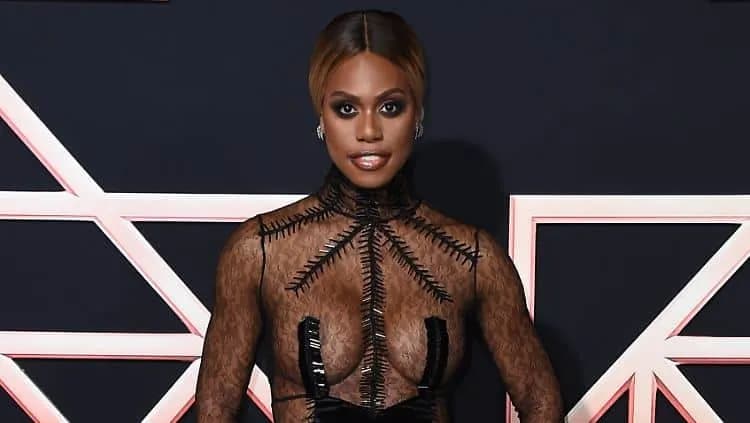
Laverne Cox, actress and transgender advocate, smiling in an elegant outfit
#6. Loren Britton
Britton is a Brooklyn-based artist who works in a variety of mediums, including painting, sculpture, and performance. Their work often explores themes of gender, identity, and the body.
Britton’s art is deeply introspective, blending abstract forms with personal narratives. They use their work to question and deconstruct traditional notions of gender and identity.
Their paintings are vibrant and layered, often incorporating bold colors and textures. Each piece invites viewers to engage with the complexities of self-expression and representation.
In their sculptures, Britton explores the physicality of the body, creating works that challenge conventional ideas of form and structure. Their art is both tactile and thought-provoking.
Performance is another key aspect of Britton’s practice. Through live art, they create immersive experiences that blur the lines between artist and audience, encouraging participation and dialogue.
Why their work matters: Loren Britton’s art is a powerful exploration of identity and the human experience. It challenges viewers to rethink their assumptions about gender, form, and meaning.
Through their multidisciplinary approach, Britton creates spaces for reflection and connection. Their work is a celebration of individuality and the fluidity of identity.
Britton has been featured in exhibitions and residencies, gaining recognition for their innovative and thought-provoking art. Their influence continues to grow within the contemporary art world.
To learn more about their work, you can explore their exhibitions, performances, and the critical discussions they inspire about art, identity, and the body.

A painting by Loren Britton featuring an organic shape in lilac and blue, exploring themes of gender, identity, and the body.
#7. Nick Vaughan
Vaughan is a Houston-based artist who creates large-scale installations that explore queer history and identity. His work often incorporates found objects and archival materials.
Vaughan’s installations are immersive and thought-provoking, blending historical research with contemporary art practices. He uses his work to uncover and celebrate hidden LGBTQ+ histories.
One of his most notable projects is '50 States,' a series of installations that explore queer history in each U.S. state. Each piece is a tribute to the resilience and creativity of LGBTQ+ communities.
His work often incorporates found objects, such as old photographs, documents, and artifacts, which he transforms into powerful visual narratives. These materials add depth and authenticity to his installations.
Vaughan’s art is both educational and emotional, inviting viewers to connect with the stories of those who came before them. His work is a bridge between the past and the present.
Why his work matters: Nick Vaughan’s art is a vital exploration of queer history and identity. It brings visibility to stories that have been overlooked or erased.
Through his installations, Vaughan creates spaces for reflection and dialogue. His work is a reminder of the importance of preserving and honoring LGBTQ+ history.
Vaughan has been featured in exhibitions and residencies across the country, gaining recognition for his innovative approach to storytelling through art. His influence continues to grow within the art world.
To learn more about his work, you can explore his installations, particularly the '50 States' project, and the critical discussions they inspire about history, identity, and representation.
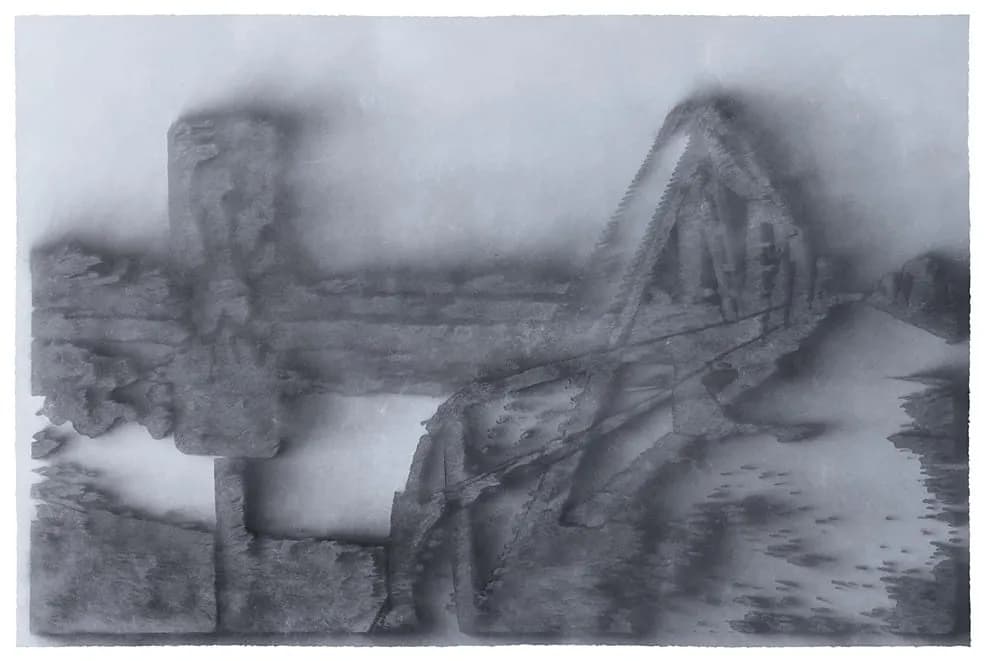
A black-and-white drawing by Nick Vaughan, featuring intricate linework exploring themes of identity and geography
#8. Leon Mostovoy
Mostovoy is a Canadian artist who works primarily in photography and video. His work often explores themes of masculinity, sexuality, and the body.
Mostovoy’s photography is intimate and raw, capturing the complexities of human identity. His images often challenge traditional notions of masculinity, presenting a more nuanced and vulnerable perspective.
In his video work, Mostovoy creates immersive narratives that explore the intersections of desire, identity, and the physical form. His videos are both poetic and provocative, inviting viewers to question societal norms.
His art often features the male body as a central subject, using it as a canvas to explore themes of power, vulnerability, and self-expression. Mostovoy’s work is deeply personal yet universally resonant.
Why his work matters: Leon Mostovoy’s art is a bold exploration of masculinity and identity. It challenges viewers to rethink their assumptions about gender and the body.
Through his photography and video work, Mostovoy creates spaces for dialogue about the fluidity of identity and the complexities of human experience. His work is both a reflection and a critique of contemporary culture.
Mostovoy has been featured in exhibitions and film festivals, gaining recognition for his unique perspective and artistic vision. His influence continues to grow within the art world.
To learn more about his work, you can explore his photography series, video installations, and the critical discussions they inspire about masculinity, sexuality, and the human condition.
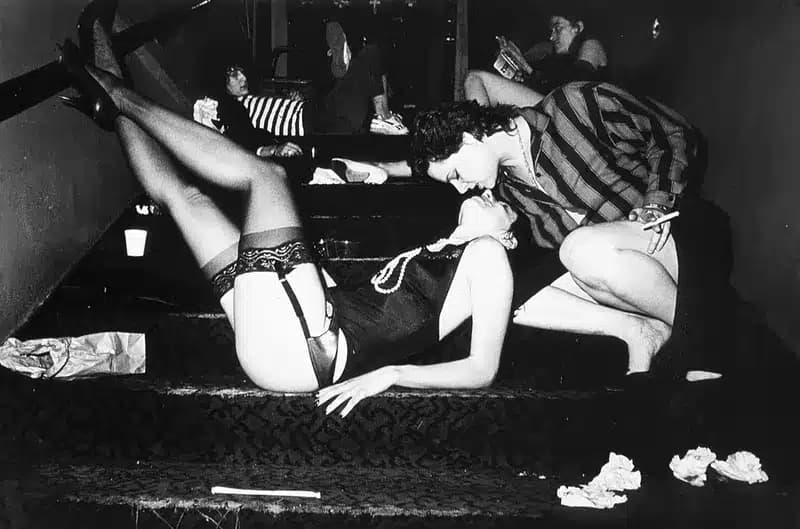
A black-and-white photograph by Leon Mostovoy, capturing themes of identity and transformation
#9. Molly Vaughan
Vaughan is a Seattle-based artist whose work focuses on the experiences of trans people. She creates intricate, hand-sewn garments that tell powerful stories.
Her art often incorporates text and imagery, referencing trans history and culture. Each piece is a blend of craftsmanship and activism.
Through her work, Vaughan highlights the struggles and resilience of the trans community. She uses art as a tool for visibility and change.
One of her most notable projects is 'Project 42,' which memorializes trans individuals lost to violence. Each garment is a tribute to their lives.
Vaughan’s art is both personal and political. It invites viewers to reflect on issues of identity, equality, and social justice.
Her work has been exhibited in galleries and museums, sparking important conversations. Vaughan continues to advocate for trans rights through her creative practice.
Why her work matters: Molly Vaughan's art is a powerful reminder of the intersection between creativity and activism.
By memorializing victims of violence and addressing systemic issues, she not only honors their lives but also challenges society to confront its biases and injustices.
Her work is a call to action, urging viewers to reflect on their role in creating a more inclusive and equitable world.
To learn more about her work and life experiences, you can watch her TED Talk, where she shares insights into her creative process and the stories behind her impactful projects.
